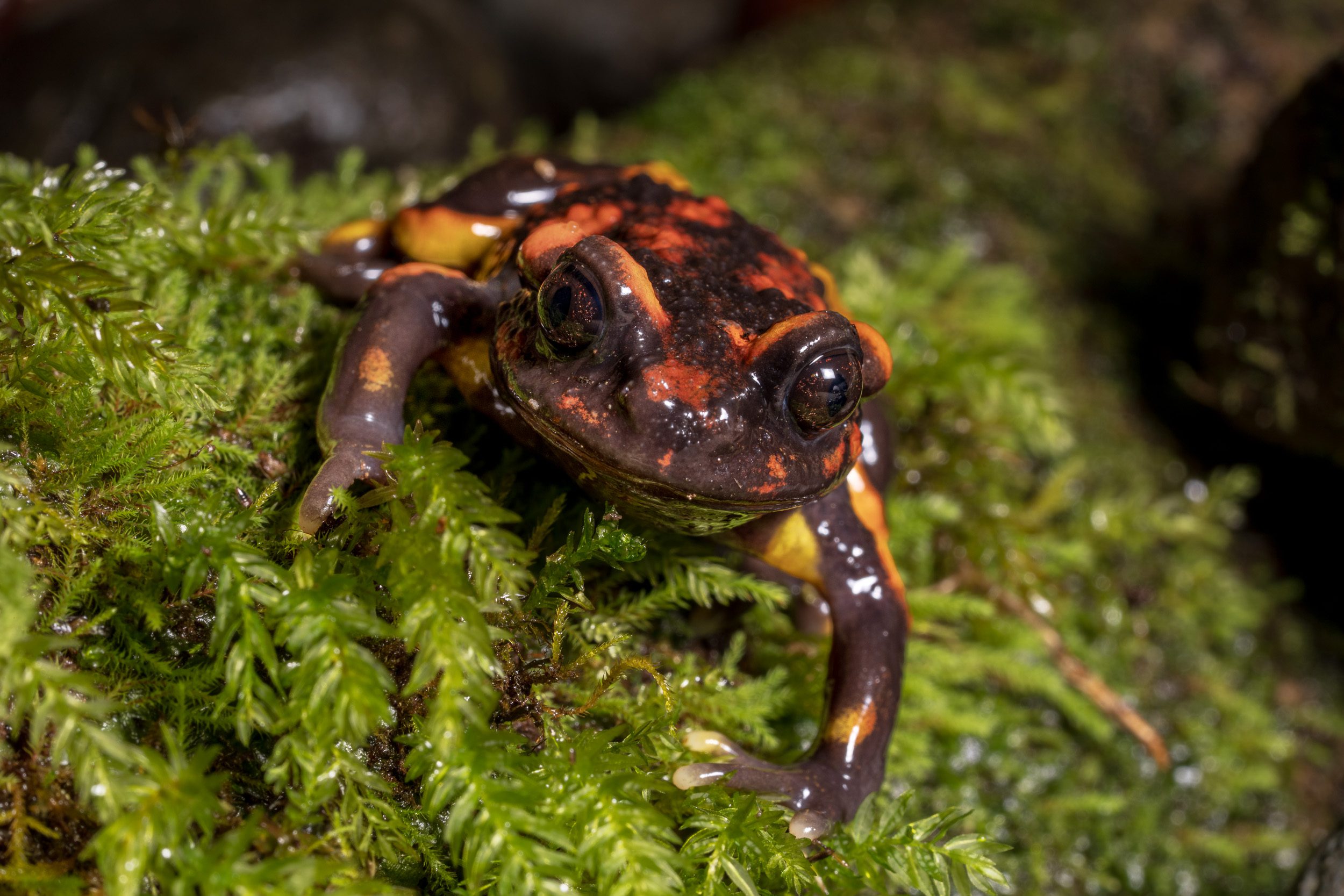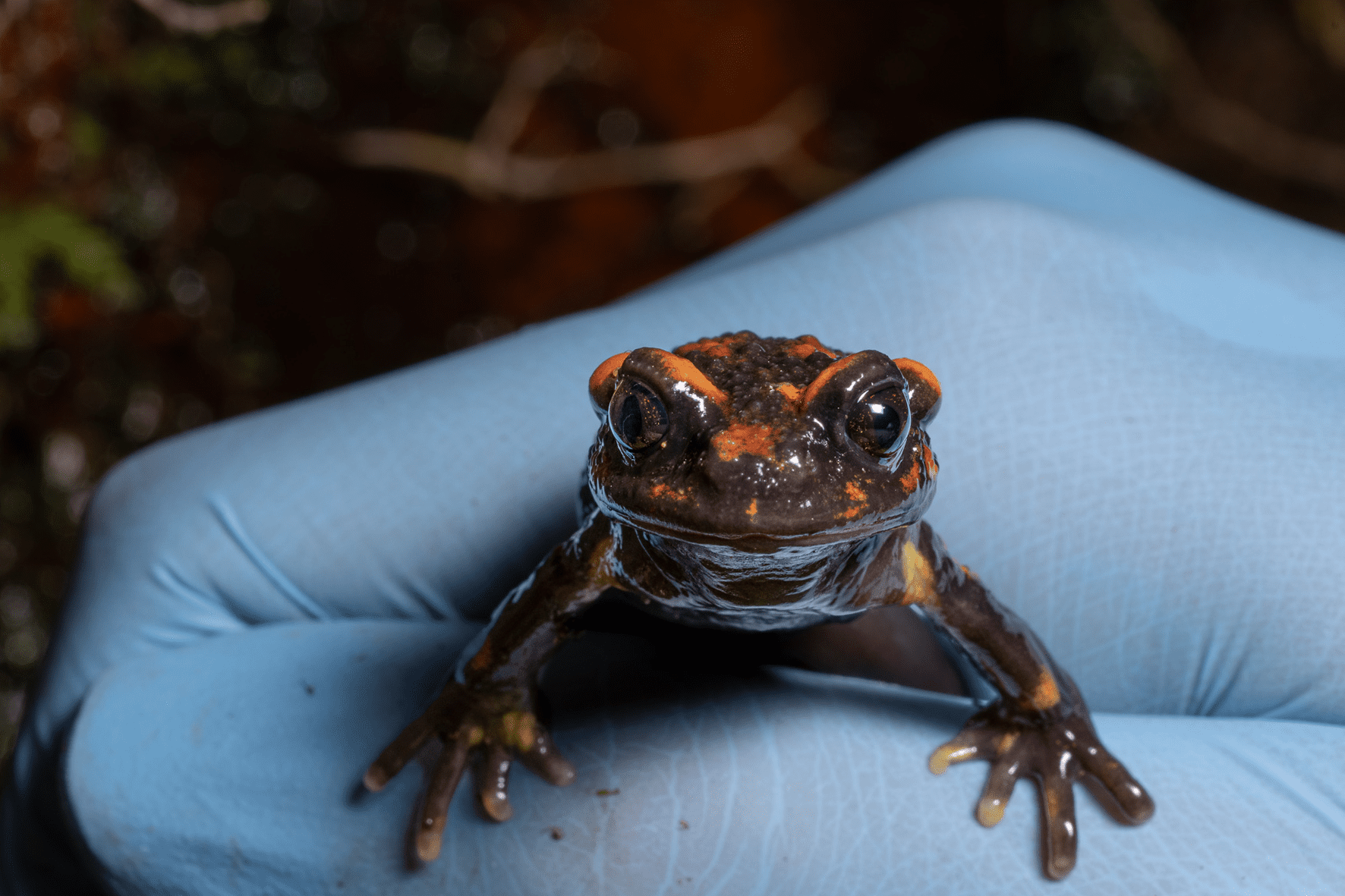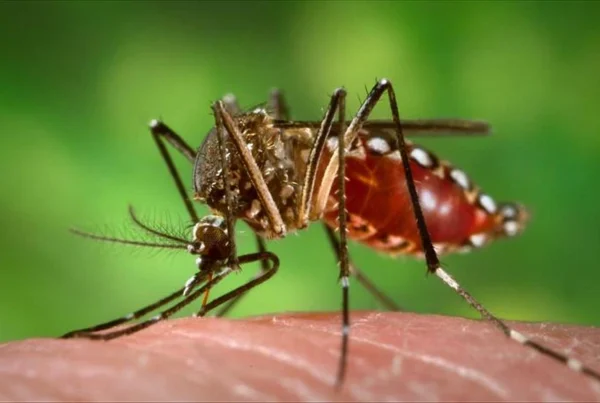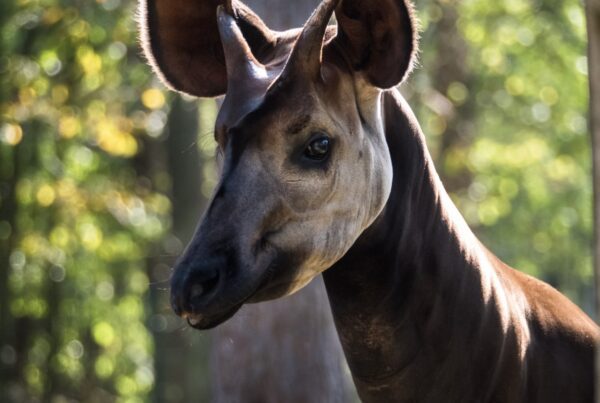
The Chile Mountains False Toad (Telmatobufo venustus) is an elusive amphibian, endemic to Chilean forests. A team of scientists, funded in part by Revive & Restore, collected DNA samples for genomic analysis to support conservation efforts and investigate potential skin toxins | © Giovanni Lo Curto
Researchers are fighting against time and environmental threats to protect the false toad, one of Chile’s most enigmatic frogs.
Story by: Júlia Dias Carneiro
Photographs by: Giovanni Lo Curto
Published in National Geographic
On the final night of a seven-day expedition, a triumphant cry pierced the night: “Telmatobufo!” Scientists waded through a cold stream, flashlights in hand, to marvel at their long-sought treasure nestled in a crevice—a tiny, dark-brown amphibian with bulging black eyes, bright orange spots, and a bumpy back.
The Chile Mountains false toad (Telmatobufo venustus) is a rare amphibian often mistaken for a toad due to glandular bumps on its back. This species belongs to an ancient clade of amphibians from when the continents were joined as Gondwanaland nearly 200 million years ago.
Their ancestors coexisted with dinosaurs, and the false toads developed as the Andes rose, adapting to mountain life. But they are more closely related to frogs in Oceania than those in South America, making them the sole survivors of this prehistoric lineage on the continent. There are four species of Telmatobufos, all endemic to Chile, but they are scarce and threatened by habitat loss.
“The false toads are so rare, they’ve always been like the holy grail of herpetologists,” says José H. Grau, the expedition leader and a biologist specializing in conservation genomics at the Smithsonian Conservation Biology Institute.
This expedition is part of a project to prevent the silent extinction of the false toad, which could occur within decades without action. The team is collecting DNA samples to sequence the T. venustus genome, aiming to develop conservation strategies and eventually reintroduce captive-bred individuals into the wild.

An aerial view shows Reumén native forest threatened by the wood industry and wind turbine projects. The remaining forest, about the size of three football fields, retains water, maintains vital humidity levels, and helps prevent fires during the dry season | © Giovanni Lo Curto
A needle in a haystack
The first sighting of a T. venustus false toad occurred in 1899; another was spotted nearly a century later, in 1983. A few more have been reported since 2008 and increasingly from 2020 onward.
Despite its rarity, a five-member expedition funded by Revive & Restore and the San Antonio Zoo was determined to find it. They traveled 1,500 miles through mountainous forests in southern Chile, exploring day and night. Their final stop was near Altos de Lircay National Reserve, 170 miles south of Santiago. After combing an area by a river during the day, Grau revisited it at night and discovered six false toads hidden in the moist rocks.
“It was an incredible feeling of awe and respect,” says Grau. “They don’t try to run away. They have an old, slow, cold metabolism and move as fast as a turtle.” The team also found two tadpoles with sucker mouths, an adaptation from 50 million years ago from when the Andes lifted, and they needed to attach to rocks to avoid river currents.
The scientists collected DNA samples from the false toads’ skin and mouths and sent them to the U.S. for genetic sequencing. They also collected environmental DNA (eDNA) from water samples to detect unknown populations.

Sequencing the Chile Mountains false toad’ genome will help determine their genetic diversity, proximity to extinction, and population sizes over thousands of years | © Giovanni Lo Curto
Multiple threats
Sequencing the false toads’ genome will help determine their genetic diversity, proximity to extinction, and population sizes over thousands of years.
Today, they are endangered, but the group hopes this may be revised to “critically endangered.” The remaining populations face threats like climate change, deforestation, contaminated rivers, and invasive species like trout and mink.
The scientists encountered these issues during the expedition, witnessing fresh deforestation and relocating after spotting trout, known predators of tadpoles. They drove through vast pine plantations, a growing industry in Chile that creates biodiversity-poor forests.
José J. Nuñez, a professor at the Universidad Austral de Chile and project leader, stresses the urgency of conservation efforts. He hopes to breed T. venustus in a lab and reintroduce them to the wild. Nuñez says genetic sequencing will provide insights into the evolution of this ancient clade and might challenge the belief that Chile has no poisonous amphibians. He references early 1900s stories of Mapuche female shamans using a river frog for healing rituals and spiritual connections, suspecting these frogs were Telmatobufos, possibly producing a toxin from their glands.
“We are striving to protect a species that has not only a historical legacy due to its ancient lineage, but also legacies as a natural and as a cultural heritage.”
– José J. Nuñez, a professor at the Universidad Austral de Chile and project leader
About the Project
This project was supported, in part, by our Wild Genomes program. Wild Genomes is a funding program to provide state-of-the-art genomic tools to the people who need them most: field scientists, wildlife managers, and citizens working to protect their local biodiversity. The purpose of Wild Genomes is to accelerate the adoption of genomic sequencing for applied wildlife conservation.
More posts in News & Media






